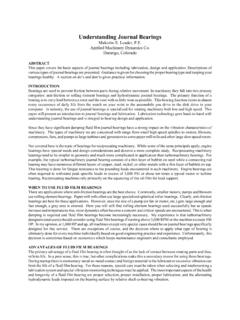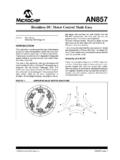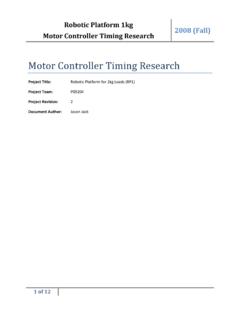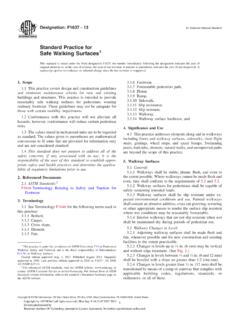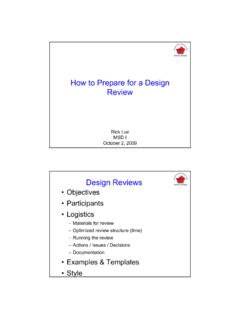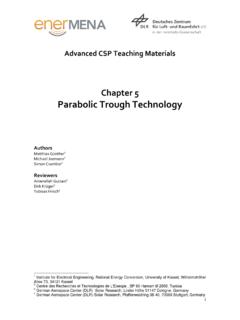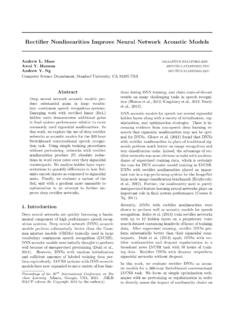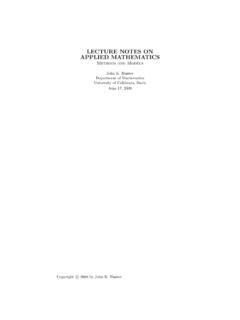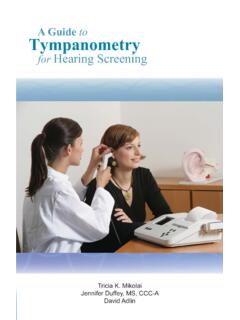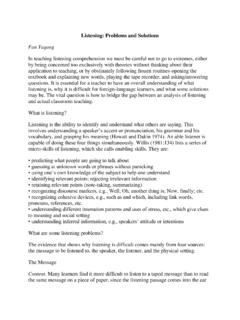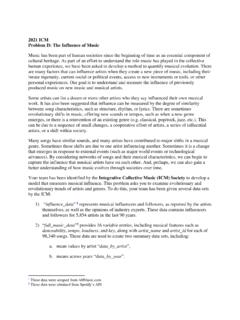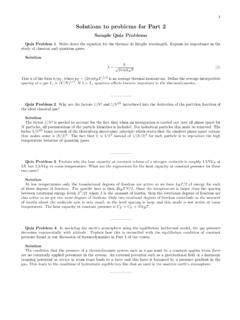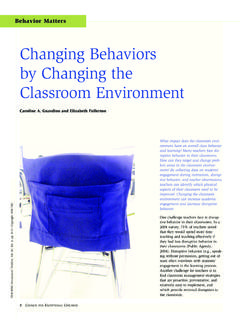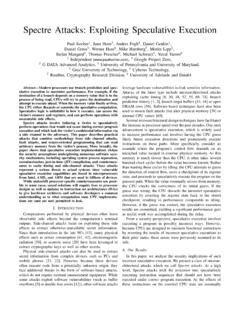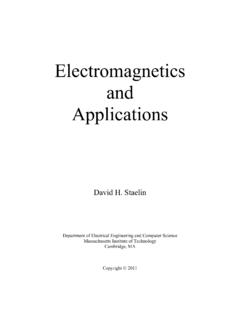Transcription of Vibration Diagnostic Guide - EDGE
1 SKF Reliability Systems Vibration Diagnostic Guide CM5003 Vibration Diagnostic Guide Table of Contents Part 1 Overview .. 1 How To Use This Guide .. 1 Detection vs. Analysis .. 1 Vibration (Amplitude vs. Frequency) .. 1 Overall Vibration .. 2 Time Waveform Analysis .. 5 FFT Spectrum Analysis .. 5 Envelope Detection .. 6 SEE T echnology .. 7 Phase Measurement .. 7 High Frequency Detection (HFD) .. 7 Other Sensor Resonant Technologies .. 7 Part 2 Spectrum Analysis Techniques .. 13 Misalignment.
2 14 Imbalance .. 16 Looseness .. 18 Bent Shaft .. 19 Bearing Cocked on a Shaft .. 19 Bearing Defect .. 20 Multi-Parameter Monitoring .. 24 Appendix A Understanding Phase .. 25 Glossary Glossary .. 27 i Vibration Diagnostic Guide Vibration Diagnostic Guide Part 1 This Guide is designed to introduce machinery maintenance workers to condition monitoring analysis methods used for detecting and analyzing machine component failures. This document was created by field experienced SKF application engineers using measurements obtained with SKF Condition Monitoring equipment.
3 This Guide is a Living Document and will continuously grow as application and experience information becomes available. It is important to note that this Guide is not intended to make the reader an analysis expert. It merely informs the reader about typical methods of analysis and how machinery problems typically show themselves when using these methods of analysis. It is intended to lay the foundation for understanding machinery analysis concepts and to show the reader what is needed to perform an actual analysis on specific machinery.
4 Rule 1 Know what you know and don t pretend to know what you don t know! Often, a situation arises where the answer is not obvious or not contained within the analysis data. At this point I don t know is the best answer. A wrong diagnosis can cost greatly and can rapidly diminish the credibility of the machinery maintenance worker. Analysis of the problem by a Vibration specialist is required. This Guide is divided into two sections. The first section introduces concepts and methods used to detect and analyze machinery problems.
5 The second section examples typical ways in which various machinery problems show themselves and how these problems are typically analyzed. A glossary is provided at the end of this document. Reference this glossary for any unfamiliar terms. 1 OVERVIEW HOW TO USE THIS Guide CAUSE AND EFFECT There is a big difference between detecting a machinery problem and analyzing the cause of a machinery problem. Swapping out a bearing that is showing wear by vibrating heavily may or may not solve your problem.
6 Usually, some other machinery problem is causing the bearing to wear prematurely. To solve the bearing problem you must solve the cause of the bearing problem ( misalignment, looseness, imbalance). If not, you are not running a condition monitoring program, you re running a bearing exchange program. It is essential that machinery problems be detected early enough to plan repair actions and to minimize machine downtime. Once detected, a cause and effect approach must be used to take further steps toward analyzing what caused the detected problem.
7 Only then will you keep the problem from becoming a repeat problem. Vibration is the behavior of a machine s mechanical components as they react to internal or external forces. Since most rotating machinery problems show themselves as excessive Vibration , we use Vibration signals as an indication of a machine s mechanical condition. Also, each mechanical problem or defect generates Vibration in its own unique way. We therefore analyze the type of Vibration to identify its cause and take appropriate repair action.
8 When analyzing Vibration we look at two components of the Vibration signal, its amplitude and its frequency. Frequency is the number of times an event occurs in a given time period (the event being one Vibration cycle). The frequency at which the Vibration occurs indicates the type of fault. That is, certain types of faults typically occur at certain frequencies. By establishing the frequency at which the Vibration occurs, we get a clearer picture of what could be causing it. Amplitude is the size of the Vibration signal.
9 The amplitude of the Vibration signal determines the severity of the fault. The higher the amplitude, the higher the Vibration , the bigger the problem. Amplitude depends on the type of machine and is always relative to the Vibration level of a good ; new machine! DETECTION VS. ANALYSIS Vibration (AMPLITUDE VS. FREQUENCY) Overview / How To Use This Guide / Detection vs. Analysis / Vibration (Amplitude vs. Frequency) Vibration Diagnostic Guide 2 When measuring Vibration we use certain standard measurement methods: Overall Vibration Phase Acceleration Enveloping SEE Technology ( acoustic Emissions) High Frequency Detection (HFD) Other Sensor Resonant Technologies Overall Vibration is the total Vibration energy measured within a frequency range.
10 Measuring the overall Vibration of a machine or component, a rotor in relation to a machine, or the structure of a machine, and comparing the overall measurement to its normal value (norm) indicates the current health of the machine. A higher than normal overall Vibration reading indicates that something is causing the machine or component to vibrate more. Vibration is considered the best operating parameter to judge low frequency dynamic conditions such as imbalance, misalignment, mechanical looseness, structural resonance, soft foundation, shaft bow, excessive bearing wear, or lost rotor vanes.
